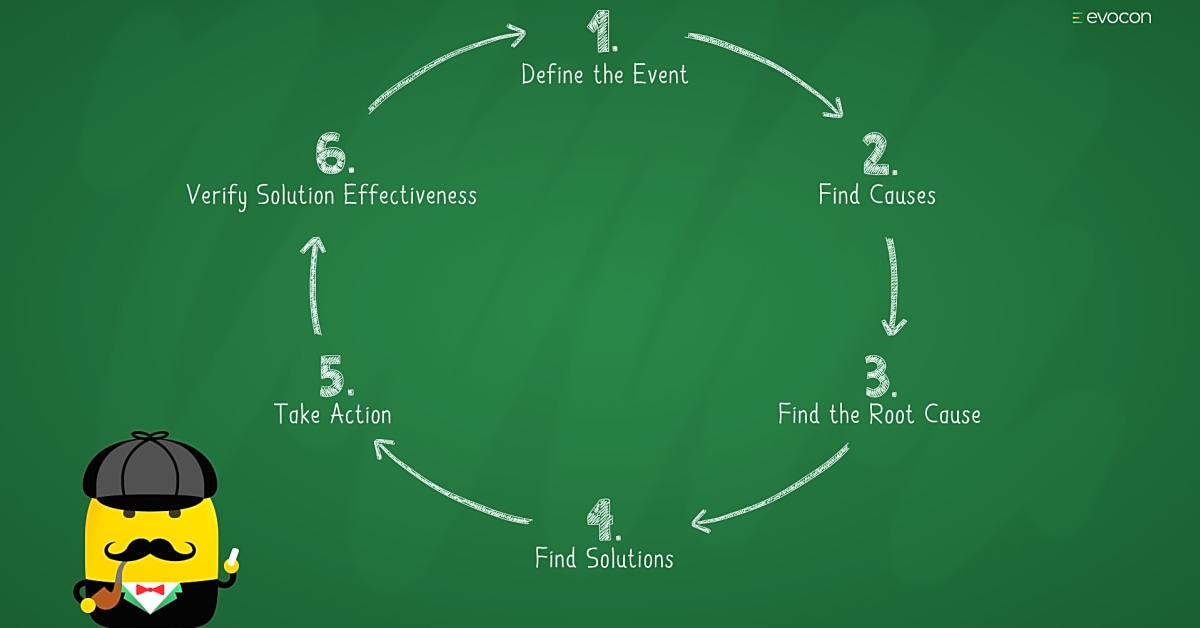Root cause analysis is a crucial aspect of process improvement for any organization. It helps identify the underlying causes of problems and provides strategies for addressing them effectively. In today’s fast-paced business world, organizations cannot afford to overlook the importance of root cause analysis in maintaining operational efficiency and staying competitive. This article will delve into the various tools and techniques that can aid in conducting a thorough root cause analysis, along with tips and strategies for operational leadership. Whether you are new to root cause analysis or looking to enhance your existing skills, this article will provide valuable insights and guidance to help you achieve your process improvement goals. So, let’s dive in and explore the world of root cause analysis.
To begin with, let’s define what root cause analysis is. It is a problem-solving technique used to identify the underlying cause of a problem or issue. It involves digging deeper into the issue rather than just addressing the symptoms. By using root cause analysis, you can not only solve the current problem but also prevent it from occurring in the future.
Some of the commonly used techniques for root cause analysis include 5 Whys, Fishbone Diagrams, Pareto Analysis, and Fault Tree Analysis. Each technique has its own unique approach, but they all aim to identify the root cause of an issue.
Now, let’s delve into some strategies and tips for effective management and team building. As a leader, it is crucial to understand your team members’ strengths and weaknesses. Assign tasks that align with their strengths to boost their productivity and morale. Communication is also key in building a strong team. Encourage open communication and actively listen to your team members’ concerns and suggestions. This will not only foster trust but also lead to better problem-solving and decision-making.
In terms of improving organizational efficiency and performance, process improvement is vital. This involves continuously evaluating and optimizing processes to eliminate inefficiencies and improve productivity. Some tips for process improvement include setting clear goals and objectives, involving all team members in the process, and regularly reviewing and updating processes.
Lastly, let’s talk about how to become a better leader in your business operations. One important aspect is self-reflection. Take time to reflect on your leadership style, strengths, and areas for improvement. Seek feedback from your team members and be open to constructive criticism. Additionally, continuously learning and staying updated on industry trends and best practices will also help you become a better leader.
Overall, incorporating root cause analysis techniques, effective management and team building strategies, process improvement, and self-reflection can greatly improve your operational leadership skills and lead to better organizational efficiency and performance.
Understanding Root Cause Analysis
Welcome to our comprehensive guide on tools and techniques for root cause analysis in operational leadership. Root cause analysis is a methodical process used to identify the underlying causes of problems or issues in a business operation. It involves analyzing the problem, identifying potential causes, and determining the root cause that is responsible for the issue.
Root cause analysis is an important tool for problem solving because it helps to get to the root of the problem rather than just addressing the symptoms. By identifying and addressing the root cause, businesses can prevent the problem from recurring and improve overall efficiency and productivity.
Becoming a Better Leader in Business Operations
As a leader, it is important to constantly strive for self-improvement in order to effectively manage and lead your business operations. One way to do this is through self-reflection. Take the time to reflect on your actions, decisions, and interactions with your team. Identify areas where you can improve and make a conscious effort to work on them.
Additionally, continuous learning is crucial for becoming a better leader. Keep yourself updated on industry trends, new management techniques, and other relevant information that can help you enhance your leadership skills. Attend workshops, conferences, and networking events to gain new perspectives and insights.
By regularly engaging in self-reflection and continuous learning, you can become a more effective leader in your business operations. Not only will this benefit your team and organization, but it will also help you grow both personally and professionally.
Process Improvement Techniques
When it comes to operational leadership, one of the most important aspects is continuously improving processes and increasing efficiency. This is where process improvement techniques come into play. These techniques involve analyzing current processes, identifying areas for improvement, and implementing changes to increase productivity and reduce waste.
One of the most commonly used process improvement techniques is Lean Six Sigma. This methodology focuses on identifying and eliminating waste in processes to improve overall efficiency. It involves using data analysis and statistical tools to identify root causes of inefficiencies and implementing solutions to streamline processes.
Another technique is Business Process Reengineering, which involves completely redesigning processes to eliminate unnecessary steps and increase efficiency. This technique is more radical and involves making significant changes to processes rather than incremental improvements.
Kaizen is another popular process improvement technique that focuses on continuous small improvements in processes. This approach involves involving all employees in the process improvement process and empowering them to make suggestions for improvement.
Other process improvement techniques include Total Quality Management, Value Stream Mapping, and Agile Methodology. Each technique has its own unique approach, but they all have the same goal of improving processes and increasing efficiency.
Strategies for Effective Management and Team Building
As a leader, one of your main responsibilities is to effectively manage your team and build a strong, cohesive unit. This not only leads to improved performance and productivity, but also fosters a positive work environment and employee satisfaction. In this section, we will discuss some strategies and tips for improving your management style and team building skills.
1. Communicate clearly and consistently
Effective communication is key in any successful team. Make sure to clearly communicate your expectations, goals, and objectives to your team members. This will ensure that everyone is on the same page and working towards the same end result. Additionally, consistent communication can help prevent misunderstandings and conflicts.
2. Encourage open and honest communication
In addition to communicating your own expectations, it’s important to encourage your team members to share their thoughts and ideas openly. This fosters a sense of collaboration and trust within the team.
3. Lead by example
As a leader, your actions speak louder than words. Show your team what it means to be a good leader by setting a positive example. This can include being punctual, taking responsibility for mistakes, and actively listening to your team members.
4. Recognize and appreciate your team
Everyone likes to feel valued and appreciated for their hard work. Take the time to recognize and acknowledge the efforts of your team members. This can be through simple gestures such as a thank you note or a small token of appreciation.
5. Encourage professional development
Invest in your team’s growth and development by providing opportunities for learning and advancement. This not only benefits the individuals on your team, but also strengthens the overall skillset and capabilities of your team.
In conclusion, as an operational leader, it is crucial to have a solid understanding of root cause analysis, effective management and team building strategies, and process improvement techniques. By implementing these tools and techniques, you can not only solve problems more efficiently but also improve your overall leadership skills and drive better results for your organization.







